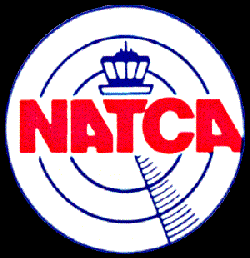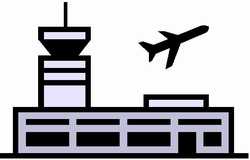Staffing Shortage Forced 90 Minute Shutdown
 Another control tower had
to close briefly last week, due to what the National Air Traffic
Controllers Association terms a staffing shortage. The union tells
ANN the Federal Aviation Administration was forced to close the air
traffic control tower at Yeager Airport in Charleston, WV (CRW),
for 90 minutes May 11, because it did not have enough controllers
to staff the evening shift at the 24-hour facility.
Another control tower had
to close briefly last week, due to what the National Air Traffic
Controllers Association terms a staffing shortage. The union tells
ANN the Federal Aviation Administration was forced to close the air
traffic control tower at Yeager Airport in Charleston, WV (CRW),
for 90 minutes May 11, because it did not have enough controllers
to staff the evening shift at the 24-hour facility.
NATCA says during the first hour the tower was closed, there
were 18 aircraft that taxied, landed, and departed the airport. Of
the 18, nine were air taxis, eight were general aviation and one
was a Lifeguard Healthnet Helicopter.
“The pilots were expecting the tower to be open, with air
traffic controllers guiding them safely in and out of this
airport,” said Jim Ennis, the National Air Traffic
Controllers Association’s facility representative at the
Charleston tower and terminal radar approach control facility
(TRACON). “This was an extremely unsafe situation.”
NATCA states almost every shift at CRW is scheduled with less
than the minimum amount of controllers needed to perform the
necessary duties. On Friday, Ennis was scheduled to work the
evening shift with three other controllers. The shifts require at
least five controllers to provide a safe and expeditious flow of
traffic, as FAA orders require.
One of the scheduled controllers was forced to call in sick,
NATCA says, and a second left the facility due to illness before
the end of their shift.
Overtime was authorized for the shift. However, only one
controller was eligible to work overtime due to requirements for
other shifts. NATCA claims the FAA is using approximately 60-70
hours of overtime a week at CRW, in order to meet its staffing
needs... leaving few controllers available for any forced overtime
when needed.
The result was that the evening shift crew was down to two
controllers after 8 pm, instead of the required five. Against the
advice of Ennis, FAA managers ordered controllers to run the shift
from the TRACON, thus making the tower uncontrolled.
“We had no procedures and were not trained for this type
of operation and some of the safety ramifications,” Ennis
said. “I recommended that we release our airspace to
Indianapolis Center (making CRW a visual flight rules tower but
nonetheless staffed by the two controllers on duty), as we have
appropriate procedures and are trained for this type of operation.
But I was overruled.
 “The next 90 minutes was
complete chaos," Ennis continued. "We were short staffed,
significantly busy, and now forced to come up with a game plan to
do something we had neither procedures nor training to do. Due to
closing the tower, many aircraft were put into an unsafe
environment that included construction on and around the airport,
safety equipment that was not monitored, a change in routine
operations, local weather not available to aircraft on the ground
nor disseminated via the ATIS (Automatic Terminal Information
Service), an inability to adjust the airfield lighting panel,
unfamiliar aircraft operating on movement areas, etc.”
“The next 90 minutes was
complete chaos," Ennis continued. "We were short staffed,
significantly busy, and now forced to come up with a game plan to
do something we had neither procedures nor training to do. Due to
closing the tower, many aircraft were put into an unsafe
environment that included construction on and around the airport,
safety equipment that was not monitored, a change in routine
operations, local weather not available to aircraft on the ground
nor disseminated via the ATIS (Automatic Terminal Information
Service), an inability to adjust the airfield lighting panel,
unfamiliar aircraft operating on movement areas, etc.”
In addition to the delay of a Healthnet helicopter (stationed at
CRW) on an active rescue flight, another aircraft crossed the
active runway while on approach frequency because they were lost
and could not find the fixed base operator facility on the airport
grounds to which they were trying to taxi. Yet another aircraft, an
air taxi, was required to abort its landing because they received
an unsafe glide slope indication.
“We had no idea if the glide slope was operating correctly
or not,” Ennis said. “The monitor is in the tower
cab.”
 Unfortunate... ANN/SportPlane Resource Guide Adds To Cautionary Advisories
Unfortunate... ANN/SportPlane Resource Guide Adds To Cautionary Advisories ANN FAQ: Turn On Post Notifications
ANN FAQ: Turn On Post Notifications ANN's Daily Aero-Term (04.29.24): Visual Approach Slope Indicator (VASI)
ANN's Daily Aero-Term (04.29.24): Visual Approach Slope Indicator (VASI) ANN's Daily Aero-Term (04.28.24): Airport Marking Aids
ANN's Daily Aero-Term (04.28.24): Airport Marking Aids ANN's Daily Aero-Linx (04.28.24)
ANN's Daily Aero-Linx (04.28.24)




